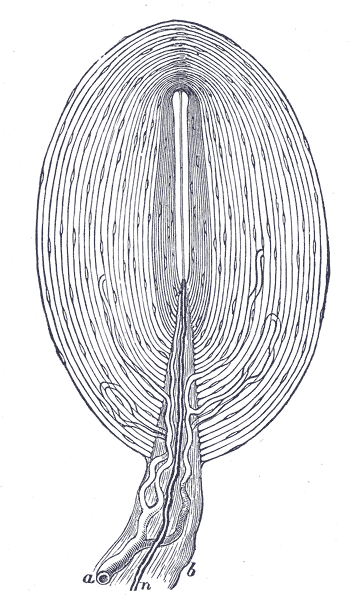The Pacinian Corpuscle
Rods and Cones
Two examples are given here to represent the general properties of receptors: the Pacinian corpuscle and the rodsand cones in the eye.
The Pacinian corpuscle
Named by its Italian discoverer Filippo Pacini (si splendido uomo!*), it is a 1 mm diameter skin receptor which enables us to perceive pressure and vibration. This is the receptor responsible for our awareness off smooth vs rough surfaces, shallow vs intense tactile sensation, etc.
How does this seemingly magical process take place?

The central capsule is surrounded by lamellae. At the heart of the capsule lies the sensory nerve tube. Throughout the corpuscle you can see capillaries branching out.
It’s easy: when you tap you finger on a surface, for example, the pressure exerted upon the lamellae of the Pacinian corpuscles in your finger skin makes them bend and exert that pressure back onto the sensory neuron in the capsule.
This physically squishes out Na+ ions as the plasma membrane is deformed, which creates a generator potential. If this potential passes a threshold, an action potential is triggered…
